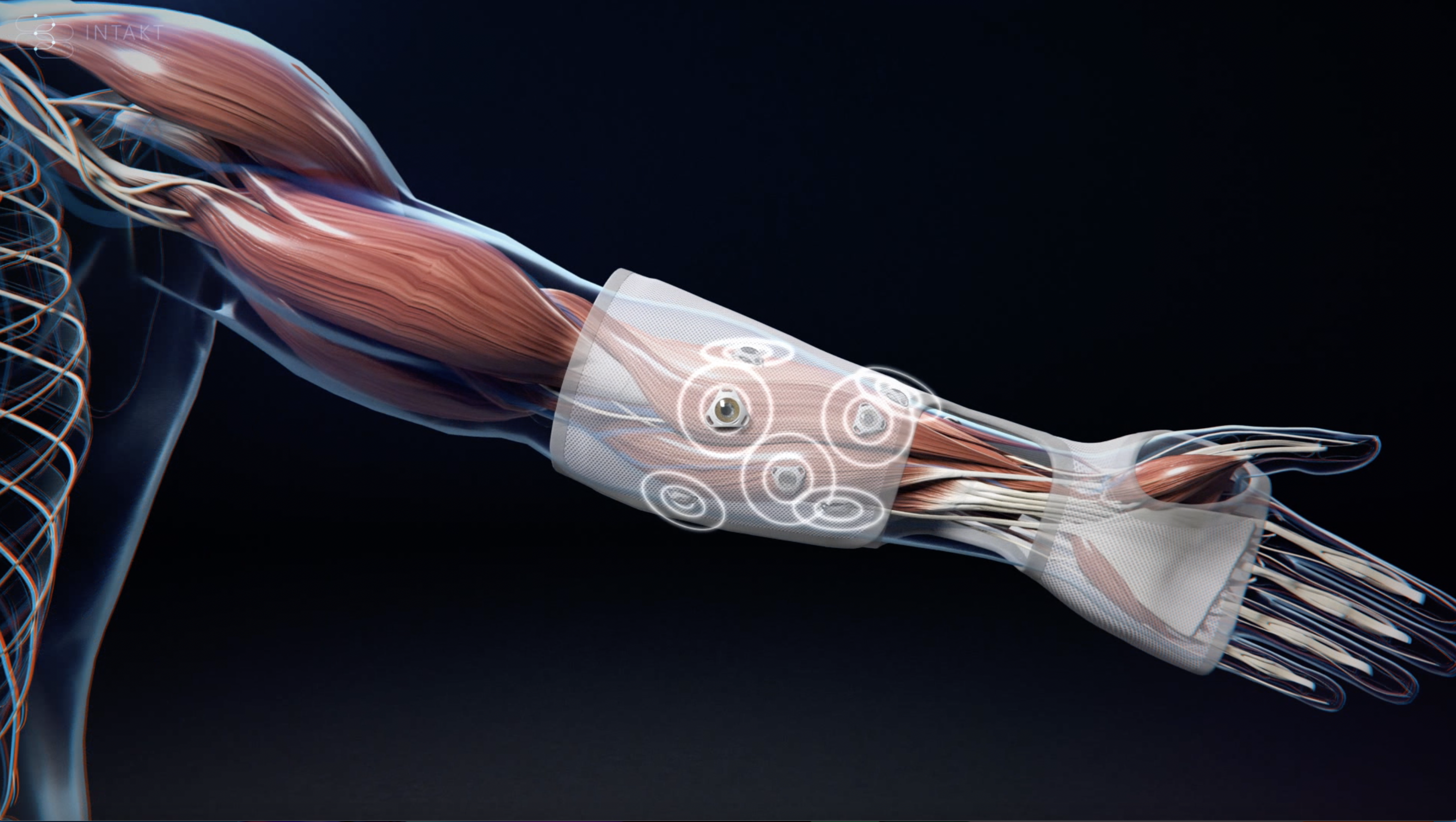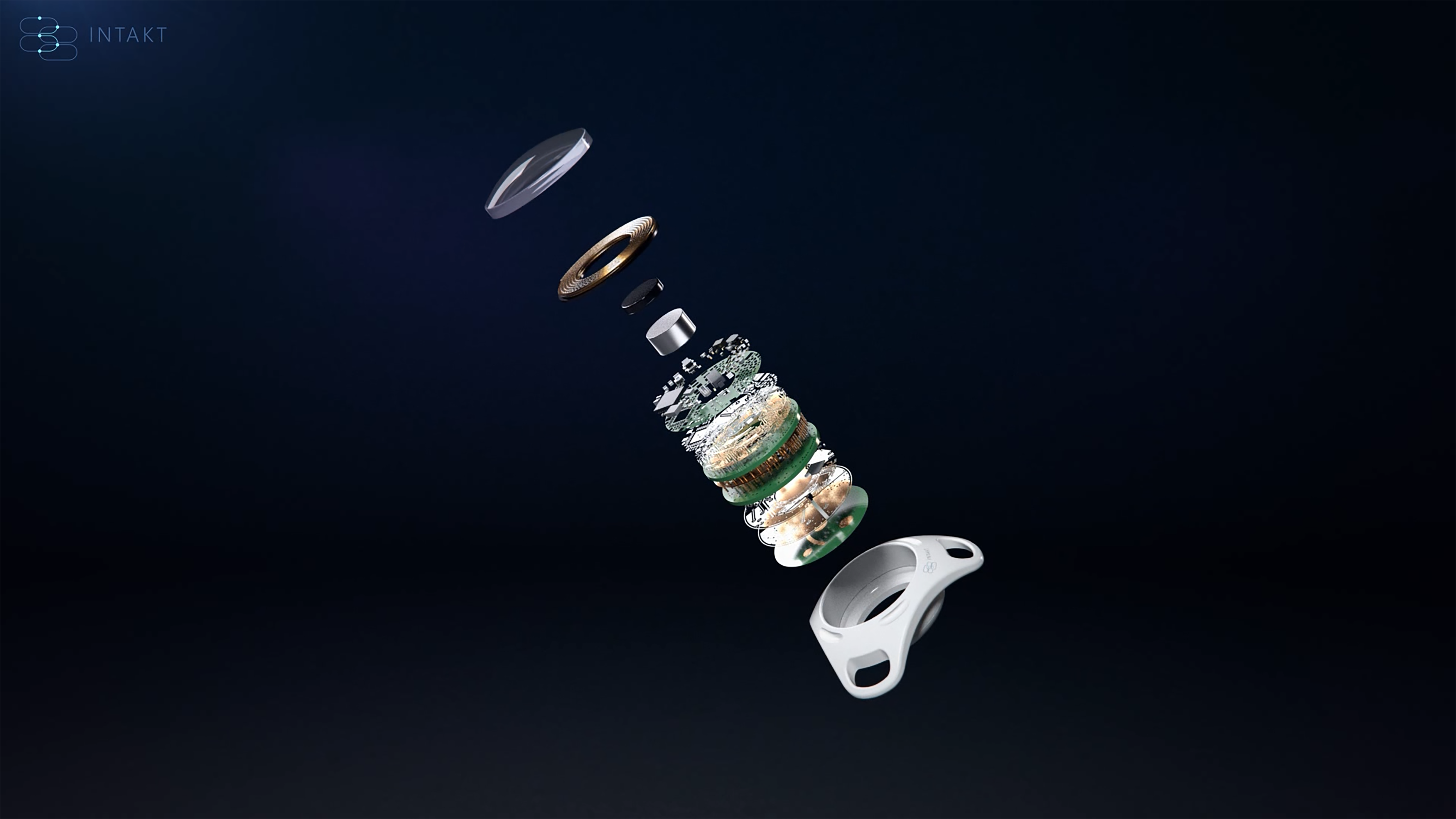BMBF innovation cluster INTAKT
A new generation of microimplants
They are barely the size of a thumbnail, able to communicate with each other and respond to each other, and designed to make life easier for people with functional limitations. We are talking about a new generation of interactive microimplants developed by the innovation cluster INTAKT, which is funded by the German Federal Ministry of Education and Research (BMBF) and coordinated by the Fraunhofer Institute for Biomedical Engineering IBMT. These miniature assistants can act as a stimulus in cases of tinnitus or digestive tract disorders or help a person’s hand to regain the ability to grip.



The development of tiny assistants that can be implanted in the body is aimed at improving quality of life for people with functional limitations. Active implants such as brain or heart pacemakers can stimulate nerves by means of electrical pulses. Unlike many drugs, they have a direct, local effect. Because they work using electrical signals, they have virtually no side effects. They do have some downsides, however: For example, the cable connections between the central implant and the electrodes can break down, and their batteries have to be replaced on a regular basis. Funded by the German Federal Ministry of Education and Research (BMBF), the INTAKT (Interactive Microimplants) innovation cluster was established with the aim of developing a new generation of active, wirelessly connected microimplants that could be implanted in the body for life. Led by Fraunhofer IBMT, the cluster’s 18 partners from industry, science and the medical sector developed a network of up to twelve microimplants that can communicate with each other wirelessly, securely and in real time.
Patients can adapt the implants to their own needs
As well as communicating with each other, the implants also allow the patient and doctor to communicate with the network from outside at any time. “The patient can configure their implants to suit their current needs at any time via their laptop or smartphone and optimize their treatment or recovery process in consultation with their doctor,” explains Prof. Klaus-Peter Hoffmann, former head of Biomedical Engineering at Fraunhofer IBMT. This allows doctors and patients to collaborate on equal terms.
For the INTAKT joint research project, the cluster partners chose three areas of application: treating tinnitus by stimulating the cochlea, alleviating motility disorders by stimulating, delaying or coordinating bowel movements, and at least partially restoring the hand’s ability to grip in cases of paraplegia.
In the treatment for tinnitus, the patient is given one implant for each ear. The implants stimulate the round window of the cochlea in the inner ear, modulating auditory nerve activity and “dampening” the phantom noise that makes everyday life so wretched for approximately ten million people in Germany. Gastrointestinal motility disorders – disorders of movement in the gastrointestinal tract – can occur after abdominal surgery in diabetic or paraplegic patients. The treatment involves placing implants at strategic points in the gastrointestinal tract, where they each collect data on the activity of one section of the patient’s system and then send this information to a central control unit. This unit analyzes the data and instructs the corresponding implants to stimulate the affected part of the intestinal tract, ensuring that the digestive process runs as smoothly as possible.
Microimplant network stimulates the muscles in the forearm
Partial restoration of a patient’s gripping function is a particularly complex challenge. To address this, the forearm muscles can be stimulated by up to twelve microimplants, restoring up to eight hand movements. The patient controls their hand movements via an eye-tracking system whereby certain set movements of the eyes, eyelids and head send commands to the central control unit, which then sends the corresponding instructions to the network of implants.
“Developing an implant network has given rise to several advantages,” explains Roman Ruff, electrical engineer and group manager at Fraunhofer IBMT. One of these is improved biostability: “We integrated the sensors and actuators directly into the device’s housing to avoid the need for fragile cable connections.” The implants interact with each other via wireless and infrared signals instead. The Fraunhofer Institute for Integrated Circuits IIS has developed a highly miniaturized application-specific integrated circuit (ASIC) for the implants. The ASIC can detect and pass on biosignals from areas such as the arm muscles or the stomach and intestines while also triggering the electrical signals required to stimulate them.
Batteries charge inductively and adaptively
The issue of energy supply, however, is causing a hold-up in the development process for these high-tech miniatures. Batteries take up space and need to be replaced regularly. This is particularly problematic when dealing with a network of implants because the energy consumption of each device is different depending on how it is used. The INTAKT cluster is opting for inductive charging instead. This means that the central control unit can reliably supply the network of implants with energy, 24 hours a day. In each of the three applications described above, the patient can wear this base station either as a cuff around the arm or abdomen or as an ear wearable device. “This external energy supply ensures that the implant network will remain stable in the long term,” stresses Prof. Hoffmann. “What’s more, the energy supply is adaptive – each individual implant receives the exact amount of energy it needs.” In case of emergency, the implants include a battery for buffer storage; this is also charged via the inductive system at regular intervals.
Initial preclinical tests and trials with experimental users have demonstrated that the applications developed thus far by the INTAKT cluster function as they should. This is just the first step on the long road that ends with putting the development into clinical practice so that it can be used to help patients.
More information:
www.intakt-projekt.de
INTAKT collaboration partners:
Fraunhofer Institute for Biomedical Engineering, University Medical Center of the Johannes Gutenberg University Mainz, Heidelberg University Hospital, Charité – Universitätsmedizin Berlin, Fraunhofer Institute for Integrated Circuits IIS, University of Mannheim, TU Ilmenau, GeSiM Gesellschaft für Silizium-Mikrosysteme mbH, in-omed Medizintechnik GmbH, Soventec GmbH, Wilddesign GmbH & Co.KG, IL Metronic Sensortechnik GmbH, Glück Engineering GmbH, Würth Elektronik GmbH & Co.KG, VARTA Microbattery GmbH, Heraeus Medical Components, CeramTec-ETEC GmbH and CTC advanced GmbH